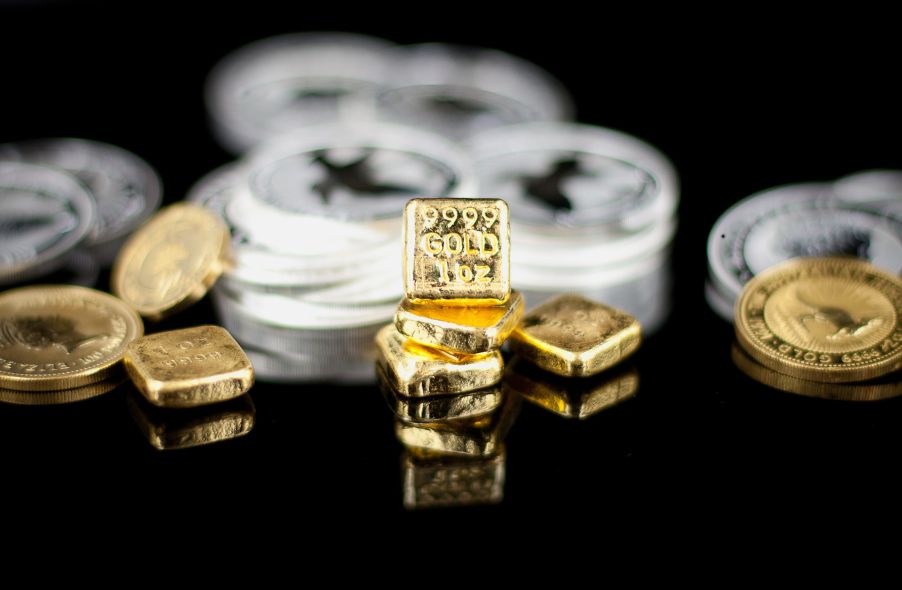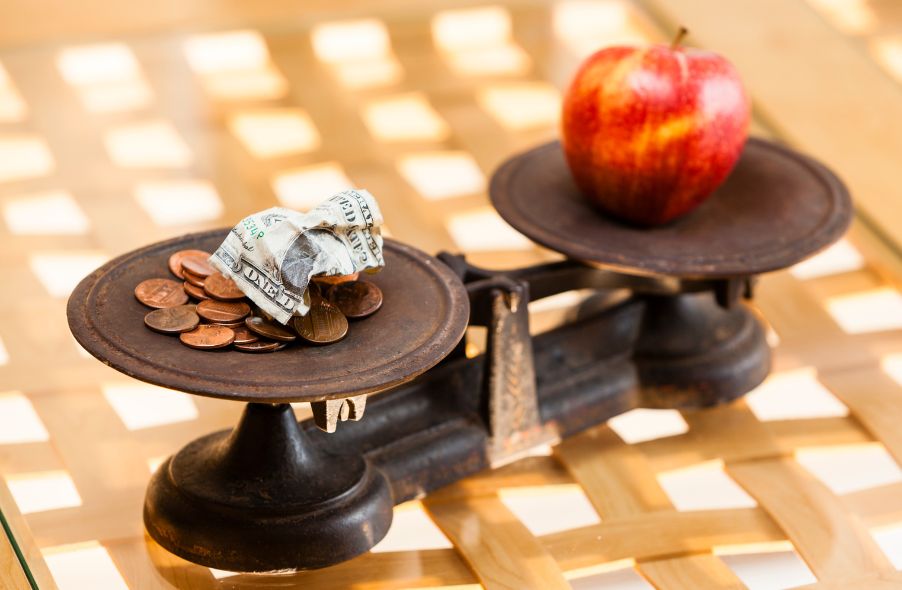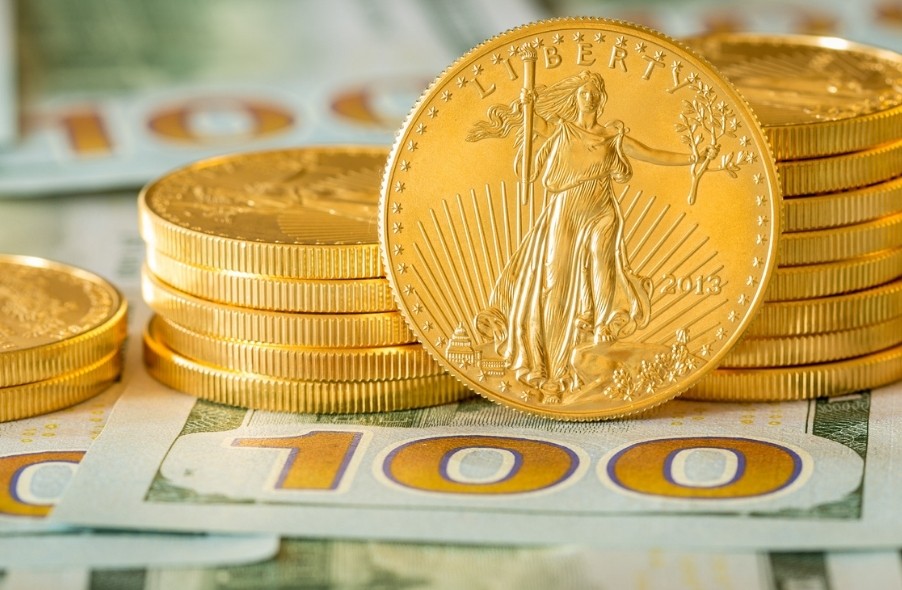If you’re interested in investing in gold, silver, platinum, and palladium, you’ve likely come across the term “bullion.” Bullion is a blanket term used by precious metals investors, dealers, sellers, government entities, and more. So, what are bullion coins?
Understanding how bullion compares to numismatic coins can help you make the right portfolio decisions for your financial goals. Below, we discuss what bullion is, how it compares to numismatic values, how bullion markets work, which popular bullion products you can buy, and more.
What Are Bullion Coins?
Bullion coins are high-grade, minted precious metal coins typically used for investment purposes. Government-issued bullion coins are the most widely available type you will come across, though you can also buy bullion from private, reputable dealers, approved banks, and brokerage firms.
Bullion coins have intrinsic value due to their precious metal content. To qualify as a bullion coin, it must meet a specific melt value, which we will cover below.
Conversely, numismatic coins obtain their value by being rare. For example, rare coins, like the Saint-Gaudens double eagle, hold value because of how rare they are, not because of their exceptionally high metal content. Bullion coins do not need to be rare or collectible; instead, they must have a specific purity or fineness level.
You can typically purchase bullion coins for a small premium over the market face value of the precious metal. In contrast, proof coins, numismatic coins, and any other collectible coin will often include large upselling charges.
Because of the high purity of bullion coins, their prices typically fluctuate like their associated precious metal. Since precious metals do not experience the same price volatility as many other asset classes, like stocks or cryptocurrencies, bullion investors can enjoy some stability. Because bullion coins are smaller, they’re often the most cost-efficient way for beginner investors to join the precious metals investment world.
Characteristics of Bullion Coins
A coin must have a melt value (referring to its purity) of at least 90% to qualify as bullion. The issuing government mints, central banks, or other facilities must stamp the official gold or silver content on the coin’s surface. Each bullion coin also includes a stamp showing the mint that produced it.
For example, gold American Eagles from the United States Mint will have the one troy-ounce weight stamp, mint authorization, and purity percentage printed on each bullion coin.
Bullion can come in forms other than coins, such as large gold bullion bars and rounds. Gold bars, or ingots, typically come at much higher price points due to their increased weight.
History of Bullion Coins
Bullion coins have a history of being used as legal tender for currency during different periods. For example, the U.S. Trade silver dollar created between 1873 and 1885 was intended for use in the China market, though it became traded worldwide.
The United States passed numerous Coinage Acts, revising the usage of bullion as currency. The Coinage Act of 1873 allowed people to use bullion currency up to five dollars, while the Coinage Act of 1965 eliminated silver bullion coins from currency circulations. Before the Coinage Act of 1965, dimes, quarters, and half dollars contained 90% silver, though the United States reduced the content to 40% following the act.
While the standard coins you use in a grocery store may not be bullion, you can still invest in the tangible asset for various purposes, like hedging against inflation. In 1974, the United States legalized the ownership of physical gold for all purposes, not just rare and unusual collectibles, allowing modern investors to buy gold, wait for the value to increase, then make money by selling.
Types of Bullion Coins

Aside from gold bullion coins, various types of bullion exist. The most popular types of precious metals for bullion coins include gold, silver, platinum, and palladium.
Gold Bullion Coins
Gold and silver are two of the most popular precious metals, though gold bullion coins typically offer the highest value. As of March 2023, an ounce of gold is worth $1,912, meaning one gold coin can cost around $2,000, including the premiums. Gold coins and bars offer excellent stability amid rising inflation, steady price appreciation, and relatively fair liquidity compared to other precious metals.
Silver
If gold coins exceed your price point, you can consider silver bullion instead. As of March 2023, an ounce of silver costs $21.80, which means you can buy silver coins for substantially less than gold coins. Despite the low price, silver provides excellent price stability, impressive appreciation rates, and lower entry prices for novice investors.
Platinum
While gold and silver may be the better-known precious metals, you can still purchase bullion in several other varieties. Platinum is a heavy, silver-white precious metal on the rise across many industries for its wide applications in computer hard discs, thermocouples, optic fibers, chemotherapy drugs, catalytic converters, and more. The platinum price per ounce in mid-March of 2023 is $963.
Palladium
Many industrial and electronics industries use this silvery-white precious metal for high-tech components, spiking its demand as the globe pushes for more environmentally friendly solutions to modern-day things like automobiles. The current value in March 2023 for one ounce is $1,390.
What Are the Most Popular Bullion Coins?
Gold and silver bullion are the most popular coins you’ll find on the market. Gold bullion coins, like American Eagles from the United States Mint and the Maple Leaf minted by the Royal Canadian Mint, are highly accessible, making them easy to invest in and sell when you’re ready to make money.
Before purchasing a coin, you may want to ensure that it meets IRS requirements in case you plan on funding your IRA or 401(k) with it. You can open a precious metals IRA and fund it with many IRS-approved minted coins and bars, though be sure your purchases meet the requirements.
Here are some of the most popular bullion coins that are also IRA-approved:
- American Gold Eagle
- Canadian Maple Leaf
- Austrian Philharmonic
- Australian Kangaroo
- South African Gold Krugerrand
- American Gold Buffalo
The Advantages of Investing in Bullion Coins

The advantages of a bullion coin investment include the following:
- Inflation protection: As money loses value, your coin investment gains value. Precious metals perform best during poor U.S. dollar periods, allowing you to protect your purchase power.
- Market exposure: Buying a single coin is a cheaper and easier way to enter the precious metals market, allowing you to learn more about the investment before diving in.
- No counterparty risk: The coin should not fluctuate in price with stock market crashes or when CEOs make questionable decisions. The coin will only reflect the value of its precious metal.
- Easy buying and selling: Bullion offers high liquidity, making it easy to sell your coin when you’re ready to make money from your investment.
- Tangibility: Tangible investments, like coins, typically have lower risk levels, unlike cryptocurrencies or stocks.
- Minimal knowledge requirements: You don’t need to know much about numismatic values or collectors’ items to begin investing.
What Should You Look for When Buying a Bullion Coin?
When buying a coin, be sure to look for the following:
- The dealer’s certifications
- The coin’s fineness
- The coin’s weight
- Shipping and delivery security and insurance
- Payment options
- Buyback policies when ready to sell
- Total costs, including all shipping, wiring, and transfer fees
How To Buy and Sell Bullion Coins
You can purchase coins from local dealers, online sellers, coin shows, and certain banks. Regardless of where you purchase from, use our checklist above to verify authenticity. If you wish to open a precious metals IRA, most providers can help you through the purchase process.
When you’re ready to sell, you can often choose a buyback program from where you initially purchased it or select a new dealer. Most precious metal IRAs offer buybacks to make the process quick and simple.
Keep Your Gold Coins Safe in an IRA
One of the primary risks associated with a bullion investment is theft. To avoid this, many collectors store their bullion in vaults.
Precious metal IRAs are a great way to secure your bullion in a vault while taking advantage of the tax benefits. At Learn About Gold, we can pair you with a bullion IRA partner who aligns with your needs.
Take our Find a Gold IRA Partner quiz today, or contact Learn About Gold with any questions





